Mold is natural. We need it for a healthy environment because of the way it helps break down organisms. But, just because it’s natural doesn’t mean that exposure to it is good for our health. In fact, mold toxicity is a real problem and most people who have it, aren’t even aware.
So, today my guest is Dr. Jill Crista who is a naturopathic doctor, best-selling author, and nationally recognized health educator on mold and mold-related illness.
Her passion is to improve health through education, bridging gaps between medical research and clinical practice.
She writes books and offers online courses for those wanting to gain actionable steps to conquer health challenges related to exposure to toxic mold.
On today’s podcast, we delve into more about mold: how these toxic exposures show up on your skin and in your health overall and what you can do about it.
So please enjoy this interview…
Mold Toxicity and Your Skin
Dr. Cates: Welcome to The Sap Dr. Podcast, I’m Dr. Trevor Cates. Mold is natural. We need it for healthy environment because of the way it helps break down organisms, but just because it’s natural does not mean that exposure to it is good for our health. In fact, mold toxicity is a real problem and most people who have it aren’t even aware. So today I’ve asked my guest on to talk about mold toxicity, mold exposure, and how it might impact your skin and your overall health. My guest is Dr. Jill Crista. She has a naturopathic doctor, bestselling author and nationally recognized health educator on mold and mold related illness. In fact, she actually trains other doctors on how to treat and address mold toxicity. Her passion is to improve health through education, bridging gaps between medical research and clinical practice. She writes books and offers online courses for those wanting to gain actionable steps to conquer health challenges related to exposure to toxic mold. On today’s podcast, we delve into more about mold. Now, Dr. Jill Crista has been on the podcast before, so we’re diving deeper this time talking about how these toxic exposures show up in our skin and overall health and what you can do about it. So please enjoy this interview.
Dr. Cates: Dr. Jill it’s so great to have you back on The Spa Dr. Podcast, welcome.
Dr. Crista: Thank you so much. I’m really excited to share with your audience more about mold.
Dr. Cates: More about mold. So for people who didn’t catch you last time, which they should go back and watch that interview because we covered a lot there. Just give everybody an overview of why mold is such an issue. I mean, I remember I grew up with a ton of mold in my home and that was one of the reasons why I think I was so sick as a kid, but my parents would say, oh, it’s natural. It’s just, you know, it’s just part of nature. It’s not a big deal. The fact that you pick up your doll from the, you know, just sitting on your floor after a day and it’s got covered in mold, that’s okay, no worries.
Dr. Crista: I can’t even believe that story when you told me that I was like, are you kidding me? The reason why I’m here on such a mission with this is that mold is such a hidden and unknown issue. It’s like the sleeper condition. You know, it’s something where it can cause almost any symptom in almost any body system. So when somebody says, well, how do you know it’s mold? And I’m like, well, you know, it’s tough. It’s tough to know. But it’s one of those things that it’s miss identified as other diagnoses so often and it’s treatable. So that’s why I’m so excited about telling people about it and not to terrify everybody because I do have a tendency to do that when I start talking about where they might find it, certain foods, you know, that kind of thing. They get a little terrified but that’s not the point.
Dr. Crista: The point is to recognize it, that it’s hidden and to treat it because it’s absolutely 100% treatable when we have mold on the inside. Mold is a really important job on our planet to decay, recycle. It’s our great recycler on the planet and it’s really important have in a compost pile, but not in our indoor environment. You don’t want the mold to be thinking that your indoor environment needs to be recycled. So it starts to, you know, eat and break down your belongings. And it does that to our bodies as well. So that’s where we need mold and that’s where it’s important to have on the planet and why it was put here. But not to take down our homes, our living environments.
Dr. Cates: So what can people do? Are there any simple steps that people can start doing on their own to address mold toxicity?
Dr. Crista: Absolutely. One of the things that’s really important to you from your book is vitamin D and that’s way important for a mold sick person because it’s not just getting the vitamin D is good, is that mold in its wisdom actually blocks vitamin D from being absorbed into your body in the intestines and the kidneys. And this has been shown in studies. So for a moldit person, it’s not just a like general good idea. It’s a necessity to get outside every day. So you convert that vitamin D into its active form and to, for most patients they have to supplement it. And I generally try to keep my patients, between 60 and 90 nanograms per milliliter. So you can ask your doctor to test your D and if it’s low and you’re sick from mold, definitely supplement it. But it’s no replacement for getting outside every day, no matter how sick you feel. Get outside and bundle up if it’s cold, you know, take a fan, if it’s warm, whatever. Make sure you’re getting outside every day cause you need that conversion because mold is smart. It wants to keep you inside cause it wants to compost you like that sees you as a food source, which is really creepy. So getting outside will help. That’s one of the best things you can do to break the mold.
Dr. Cates: So what are the, some of the symptoms that people like experience that you’ve noticed that with, with mold toxicity and mold exposure?
Dr. Crista: The number one is fatigue. That’s the tricky one with that is that could be blamed as lots of other things. I’m working too many hours. I’m not handling my stress well. I’m not sleeping, you know, fatigue. I’m not exercising or I’m exercising too much. It can be lots of different things. So fatigue can get blamed on lots of other conditions as well, like hormone imbalance and food allergies and nutrition deficient nutrient deficiencies, that kind of thing. So fatigue is very common, but not specific to mold cause it can be so many other things. I see often a lot of skin things. A lot of skin whatever your tendency is. So if it’s toward acne, it’s going to be cystic painful, angry acne. If it’s toward aging, it’s going to be increased spots increased wrinkling. So skin something usually is in there and it doesn’t always have to be a breakout.
Dr. Crista: It can be whatever your tendency is, it makes it worse. I also see a lot of gut disruption because often it will increase the fungal burden in the body. So people end up getting candida overgrowth. They start getting food sensitivities that they never had. That’s a cardinal symptom for me. If someone comes in and says, Oh, I’m so tired, I’m not sleeping. I’ve got this weird rash thing and I can’t eat certain foods anymore. And I’m like, Ooh, you know, okay, it could be a food sensitivity, but if you could always eat that food and you couldn’t, since you took this new job or since you went on vacation, stayed in a nasty Airbnb or so. And I’m thinking, okay, we might do dealing with mold, so fatigue, skin, gut and also neurological. So foggy brain, cognitive problems and some level of anxiousness.
Dr. Crista: I don’t want to say anxiety because we have an idea in our society that anxiety is sort of like something that’s this panic attack kind of thing and it’s anxiousness. It’s an internal sense of restlessness, unsettled, overwhelmed, easy to overwhelm, can’t get it together, can’t get your thoughts right, can’t read. Often there’s visual disturbances, so you have that combination of just like feeling like you’re not on your game. So those are some of the kind of common ones. There’s some quirky ones that are a little more diagnostic of mold, like ear ringing. One of the main medications that causes ear ringing is antibiotics and most antibiotics are actually mold toxins. So that’s one of the things that we see. It’s a quirky one. Pelvic pain is another one. People who have chronic pelvic pain and there’s no explanation, no bladder infection or anything like that.
Dr. Crista: We see that a lot as a quirky one. And another one is urinary frequency. So mold gets in the way of keeping water in our body. There’s a hormone that it gets in the way I’ve called ADH or antidiuretic hormone. So people are running to the bathroom a lot because the toxins irritate the bladder, which makes them have to pee more often and then they can’t hold water in their body so their pee more often. And so those are just kind of the little quirky ones that if that’s along on the symptom line and I’m thinking, Hmm, okay this, this could be a mold thing.
Dr. Cates: Right, okay. And you have a a mold quiz that people can take, right. That, tell everybody about that because like you said there, there are other symptoms too. So people really identify, cause sometimes it’s hard to all pull it all together and figure out if it is an issue. So that’s why you put this quiz together, right?
Dr. Crista: Yup. Yeah. So a lot of times when people hear about mold, they think of it as an allergy. And that is one of the components of having mold illness is mold spore problem. But mold illness is more the toxins that mold makes. And that doesn’t necessarily mean that you have to have allergies or sinusitis or anything like that. So I put together this quiz so that someone could just like, if they’re listening today and they’re wondering your, that’s what’s going on with my skin, they can go to moldquiz.com and they can fill out the quiz and it’ll give them a, a probability of it could be mold or not it’s probably not mold, it’s something else. So you talked about a lot of other things in your book that that could be contributors, you know, just lifestyle things. So, it’s nice to have that little quiz to kind of, as you go through the quiz, people are saying, Oh I learned, I didn’t know that that was a mold thing and learned a lot taking the quiz cause I didn’t know that was a mold thing.
Dr. Crista: Yeah. And so with skin, you know, do you have anything more specific on why like why mold would particularly create skin issues and any case studies or anything that you want to share with that?
Dr. Crista: Absolutely. So the reason why skin gets hit the hardest is that our skin is our largest organ of detoxification and it’s our largest boundary against the outside world. The next one is our gut. You know, the body thinks of itself as a donut. So the inside of our gut is kind of an interface with the outside world until the body decides to bring it in as nutrient or poop it out as a critter or a toxin, that kind of thing. And then the lungs get hit. So the skin takes the biggest burden of this toxic exposure. Like I was saying, mold is a spore illness and a toxin illness, it’s way more a toxin illness than it is a spore illness.
Dr. Crista: So if you’re in an indoor toxic and toxic mold environment or even a water damaged area, you can be inundated with these toxins that are riding along on ultra fine particulates and in the air. So those will collect and really porous areas like mattresses, couches, furniture, that kind of thing. And if your skin, which is our largest organ of detoxification, but also a great way to get things into our body, if you plop down on that couch and you’re wearing shorts and t-shirt, you are now able to absorb all those toxins. And that’s how then your skin becomes toxic. And that’s the way that the body tries to handle that is to have an inflammatory reaction to push it out. So that can look like all kinds of things. You know, we talked about some of the symptoms, whatever is your tendency, it can make worse.
Dr. Crista: But there are some Cardinal ones like, a new skin allergy so somebody could eat strawberries and then now they get strawberries and they get a skin reaction. That’s one of those things I’m like, huh, what’s going on there? You know? Or they were able to use certain products. While they may not have been really good products to put on the skin, they might have contained some of the things in your book that are super toxic or mineral mineral oil. And now they can’t tolerate that. It’s because now the body has tipped the scale over on the amount of toxin that it can handle. And it tries to do that by having an inflammatory reaction or an aging reaction.
Dr. Cates: And it all plays a role in the microbiome or I’ve had a podcast guest on recently talking about the microbiome. You know, we have a fungal, micro-organisms that live on our skin too that are normal. But when we have the toxic mold interacting with them, I’m sure that’s when it kind of, like you said, tips the scale and people start to have problems, right?
Dr. Crista: Yup. Absolutely. Yeah. If you tested everybody’s skin. It would have bacteria, fungus, it would have viruses, you know, all kinds of things ride there. Same thing with our sinuses, our gut, our lung tissue. So, when we, when we look at what happens when you’re exposed to an indoor toxic environment, that those gases from the toxins trigger a protective mechanism of the normal flora on our skin, in our sinuses, in our gut, and they start acting up like they’re threatened. Like their territory is threatened. So they’re not even acting. They may be present, but they’re no longer acting in a, in a cohesive way with the other microbes. They’re not acting in a competitive way, which means the other normal microbes have to do the same thing. So micro and mico biome of your skin, your sinuses, you’ve got, that’s all really critical to stay in balance, to get better from this.
Dr. Cates: Yeah. So let’s talk about foods now I think people would think, okay, blue cheese has mold, but that’s like what a, you know, like what else, you know?
Dr. Crista: Yeah. So the concept of the foods to avoid are the things that are fungus or fun in the fungal family. Because like I said, those fungi are starting to get competitively. So you really have to knock down the total body burden and sort of put it back in its place. And that’s really hard to do if you’re continually ingesting things that are in the fungal family. So I have my patients stay away from cheeses, aged cheeses especially, and then mushrooms cause they’re just in the fungus family yeast also in the fungus family. So that means any bread that’s leavened. The other thing then you have to avoid are things that encourage fungal growth, which is its favorite food is carbohydrates and sugar. So baked goodies are like the kiss of death for a mold sick person cause it is going to feed all the fungus in their body and it’s going to have a party.
Dr. Crista: I can’t tell you how many people say, you know, I ate it, I got a little buzzed and then I got really sick. And that little buzz thing is the inflammatory reaction scoops up this big endorphin response. So people can actually get addicted to eating these foods that make them sick. And then they get the inflammatory reaction afterwards and the fungal overgrowth, and then they just feel brain fog, tired, can’t get it together. Maybe some gut things like bloating, gas pains, that kind of thing. So the fungi themselves, the things that grow them. And then there are certain foods that the way that we grow and store them tend to grow mold in storage or in the way that we’re growing it cause we’re not renourishing soil. So those foods are like potatoes, corn, soy is a big problem and peanuts. So those are on my no-no list because I just feel like, you know, if you’re going to get better from all lists, take at least start by avoiding the things that we know are going to tip the scales in favor of the mold.
Dr. Cates: Right. And those are pretty much the things that I tell people to eliminate in my book. Yeah, I think I have mushrooms in one of my recipes though.
Dr. Crista: Yeah. Well, you know, if you’re not sick from mold, mushrooms are wonderful and medical mushrooms are medicinal mushrooms are part of my, what I call the remediation phase. After you’re all done and you need that immune boost, they’re really important. But while you’re sick from mold they can be hard to tolerate. The other thing in your book is fermented foods, which we know is really important for anti-aging and healthy skin and healthy microbiome. But when you’re sick from mold can actually make you sicker.
Dr. Cates: Right. Yup. So, certainly now you in your book, you talk about, what’s the name of your book? The full name of your book?
Dr. Crista: Break The Mold: Five Tools to Conquer Mold and Take Back Your Health, right there. You can recognize the big flower of herbs on the front if you can tell him in naturopathic doctor.
Dr. Cates: Yeah. Yeah. So there’s, you know, there’s a lot of overlap when we talk about, but if you’re listening and you’re thinking, Oh, this sounds like me, get Jill’s book, Dr. Jill’s book too, and look at what she’s got and, and cause then the two are complimentary. You know, our programs are complimentary and I mean, Hey, we’re both naturopathic doctors. We went to school together. We have a similar approach of get to the root cause trying to find what the root causes and then address that. Right? Yeah.
Dr. Crista: Yeah. I mean you even talk about mold in your book too. I’m sure that’s from your personal experience that it’s on your radar now only because it was in our training. But because you lived it, you had that experience.
Dr. Cates: Right. And coffee also, can have mold growing in it. What about tea?
Dr. Crista: Yeah, tea can, I think that as long as you’re doing organic green tea, the growing practices of using organic, they don’t necessarily store the leaves and it doesn’t get a chance to get as moldy. So I feel pretty confident with organic tea. But coffee is a real bugger. It’s just like the other things we’ve talked about, potatoes and corn it way that we mass produce and mass store it, it can become a really important part or a really big problem and someone could be drinking it everyday and not know that they’re making themselves mico-toxic. So you know, having mold free coffee, like Bulletproof coffee, that kind of thing is really important. And you have a great coffee alternative in your book. The only little adjustment I would make to that is a mold person they can’t handle a Roybal. Many can’t because it’s a fermented. So that could be something they just take out of the recipe and then they can, if they don’t tolerate coffee or they can’t find mold free coffee and they can be using that alternative, that’s then if they do find on the mold quiz it’s probably mold. That’s one tiny little adjustment they can make and still do something really good for their body because dandelions incredibly important for the detox part of getting better from mold.
Dr. Cates: Great. Great. You know, I think that the way we live has really contributed to the mold problems that we have, that the way our homes are built, the way our food is, like you just mentioned, our mass, the mass production and storage of our food and the way that it’s, you know, it’s kept around for a long time. It’s not as fresh. So the opportunities for mold, our overuse of antibiotics, um, and all of that certainly has contributed to the, you know, the problems with the toxicity of mold. Right. I mean, especially with our homes too.
Dr. Crista: Absolutely. You know, we used to honor nature’s cycles and seasons and when we would build our homes, you would never build a home through the rainy season. And now, because we have this over faith in treated wood and these kinds of things in my area, you know, I’m seeing things go up all winter long, all through the rainy season. They’ve pour a slab or put in a basement and it rains and rains and rains and that soaks up all this water and then they close it up. And there’ve been materials that we’re ordering from places that are too far away like China and in on the way to the United States, it gets water damage and they just turn the moldy side the other ways he can’t see it and slap it up on the wall. I mean those kind of the quick building practices so that we can all have these McMansions you know, I think that if we were to slow down and, and build the way that honored nature, I think that would be a very important first step.
Dr. Cates: Yeah. So what can people do with their homes? I know we talked about this some in the last podcast, but what are some simple things? Cause I don’t want to leave that out of this one too. Yeah. Cause I mean you talked about mold in your sofa.
Dr. Crista: Yeah. So I say in my book there some things. Yeah, that’s right. Yeah. Yeah. No pillows, no nothing. So yeah, I have some things laid out in my book that are not only just remediation tips. So if it is something that’s a problem in your home, the things that I’ve learned taking my patients through remediations and learning how they can protect themselves, how to have a good remediation. But the prevention piece that’s easier. You know, an ounce of prevention is worth a pound to cure. So two really important things that you can do for your home. Manage the humidity no matter where you are. I mean I hear it all the time. I couldn’t have a mold problem. I’m in Arizona. Well that has to do with the outside. What talking about is that something going on in the inside and because we’re human and we like you know about 70 degrees and we like a certain kind of humidity, we all are in the United States experiencing the same risk factors for mold.
Dr. Crista: And sometimes the more warm environment you are, the more cold and dry you are, the more you get that humidity difference. So managing the humidity in your home. And I have people just go to the pet store and get those little humid iStats and put them in every room because as we know, every room was going to be one room was a little colder and one’s a little warmer. One gets more moisture so that you can manage the humidity at each of those spaces. Mold can grow in as little as a 50% or more moisture. So people think flood, I haven’t had a flood, I haven’t had a water damage. You’ve haven’t had a leak, doesn’t matter if you have a consistently humid home, it can grow because we make our homes with its favorite food. All these easy to digest carbohydrates. So managing humidity is super easy you know like anybody can do it.
Dr. Crista: It’s not expensive. Get multiple dehumidifiers. If you have an area that’s a problem area, you might need more than one but manage humidity. And the second one is dust. I say my book dust with Gusto because the dust is those little fine particulates. That’s what’s carrying around all these toxins. That’s what’s carrying around the chemicals that make you sick. So if you can manage the dust and clutter, that’s a really simple way to make sure that your total load is lower. And I know you mentioned your book, you go more aggressive than I do even on changing your filter every month. I think that’s a great recommendation and I’m going to actually borrow that. That’s all right. As I say, at least two times a year. But you know, if you have a mold problem, why wouldn’t you? It’s a very inexpensive way to maintain your health and prevent, which ends up being very expensive disease and condition.
Dr. Cates: Right. And especially when you live somewhere like I live in Park City, the air is constantly going through that system. So it’s pulling out stuff through the air. Now somebody is not, you know, and when we lived in California, I didn’t have to change my air filters as much cause we would just keep the windows open and the, you know, the, the outside air and you know, would help kind of help the circulation. But yeah, here I feel like that’s one of the reasons why I like, you know, that’s what I say. If you, if your constant, your air is constantly running, especially, and then also getting the ducts clean cause people forget about that part too. And you don’t have to do that, you know, as frequently, but at least every couple of years.
Dr. Crista: Yeah, yeah, absolutely. And if you’ve had mold in your environment, I recommend having the remediation company do the duct work. I’m about to post a video that shows why that is because they pull the yucky air outside and into an encapsulated bag. So it’s a, it’s a HEPA filtered bags so that anything that was residing in your house and in the ducts is now captured and not outside for you to bring back in on your shoes or on your pets, you know, for, and those kinds of things.
Dr. Cates: Oh, that’s amazing. And, and then also with air do you know, how do you feel about air purifiers and I, I’m a big fan of those. We have, I don’t know how many we have on at my home now. I think I have like four or five. Um, uh, we have Austin Air and Blue Air. Those are some of my favorites. But do you have any others that you like?
Dr. Crista: Yeah. Yes. And I think they’re very important for prevention. I am not a fan of trying to use them as a remediation cause you have to get rid of them all, you have to get rid of the mold. It’s making so many more toxins in that filter than even the best commercial filter can handle on a daily basis. So once the mold is gone or as a prevention, then I like to use air filters. But the ones I focus on because I’m a mold specialist are things that go down to the mycotoxin level, which is very, very, very small 0.01 microns. It’s like tiny amount of filtration. So that would be things like hyper HEPA. And another one that I like is using DFS technology is what it’s called and it’s the IntelePure So IntelePure and IAQ air or IQ air. Sorry, I say that wrong, those are two that I really like cause they get it down. They, if they’re thinking about the mycotoxins.
Dr. Cates: Yeah. And I believe Austin Air does too. Yeah. So okay, so we’ve talked about air purifiers. Oh, and I also want to mention as you were talking about humidity in homes, I mean showers, everybody takes showers and I turn the exhaust fan on just like a simple thing just to, as a prevention, like turn your exhaust fan on whenever you take a shower. I mean, I live in Park City it is so dry here, but we can, we’ll get mold will start to grow if we don’t keep the air you know, the exhaust fan running and maybe even a door open just to kinda let not let the, all the humidity trapped in that in the bathroom. Right.
Dr. Crista: Right. Absolutely. Use your venting. You know, that preemptive venting is really important. If you know you’re going to cook a whole thing of pasta and steam some vegetables, you better have something moving that air out of that environment or it will collect.
Dr. Cates: Right. And again, it’s not, you know, it’s really more of the way that our homes were built and the way that we live, we have to be mindful of all that. Now as far as testing in the homes what kind of tests do you recommend?
Dr. Crista: Since I’m way more a body expert than a building expert, I think that, you know, we’re often in the position as doctors to try to help our patients navigate this. So it’s good to know about this. You know, what the testing options are. And I teach about that in my mold training course for doctors just so they have a literacy about what tests are out there, what are the strengths and weaknesses of each kind of test. And that’s the complicated thing is that you and I know that every body is different and an individual, every history of that body contributes to that person’s health or wellness. Same thing with a building. Every building is individual. So you want to find, what I usually do is recommend an indoor inspector that is a holistic minded inspector. So they’re using, there’s no like perfect test. There’s no one perfect test, just like for a body.
Dr. Crista: There’s no blood test that tells you everything about you. Same thing with a building. They’re positive and negatives to each test or strengths and weaknesses. And you’re trying to find somebody that’s going to be using many data points that can tell you where the problem is. How bad is it, what kind of species are you dealing with. Cause then as doctors, if we know the species, we know somewhat about where that person’s needing more support. So there’s anything from ERMI testing, which is very popular to mycotoxin testing in the dust. I am not a fan of somebody just coming in and bringing a plate in, taking the top off, putting the top back on after, you know, 90 minutes or whatever they say and then shipping that in, that is a good pre test. So if they, if it shows mold, you know, you have a problem but it only catches 10% of the toxic molds, 90% of the species don’t grow on that auger, they don’t grow on that plate.
Dr. Crista: So you could be missing a lot of problem. So if they do see mold, definitely that is time to call an inspector. If it’s negative, it still may not be really not mold. And that’s what I’m seeing frustration with is that people come in they’re resistant to the fact that it could be mold in their home cause they’ve done the plate test and said it was fine. It’s like, no it isn’t fine. And they’re, they’re diagnosed with big scary things like MS and you know, alzheimers are dementia, irritable bowel syndrome maybe needing to go on an immune modulating drug. And it’s really because they are living in a moldy home.
Dr. Cates: Yeah. And, and like you said, you also help with training practitioners. You have a program, a course for practitioners too. And I know a lot of our colleagues are big fan of your program. And so how do people learn more about it? And I also think it’s, I think it’s great for everyone to know that you have this because there aren’t more people specializing in mold toxicity and addressing it for humans in the body, there aren’t, they aren’t easy to find. So we need more people like you around the country because it’s much better to work with someone locally than trying to work, you know, for somebody across the country. So we need more people like you around the country. So I appreciate that you’re doing this. And so people, you know, if you, you know, you’re listening and you know, somebody, a practitioner that might be interested in this, certainly check out Jill’s stuff. So how do people find your practitioner training?
Dr. Crista: Sure. They go to my website, drcrista.com, that’s D R C R I S T A.com/courses. And on there, if you’re a practitioner, you can get my clinical questionnaire. So I am the mold quiz and that’s just kind of a pre-screen. It’s fun, you know, it’s kinda educational. Go through it and realize, Oh wow. I didn’t know that was a mold thing. But for clinicians, I have a clinical questionnaire that I created. I put it in my book. But if any clinician wants to start using it just to start screening their patients, they can go to that drcrista.com/courses and get the clinical questionnaire. It’s a great way to convince your patient who is resistant to the fact that it’s mold and also it’s really nice to track the treatment progress because people will forget how horrible they felt. That’s the good news about our amazing brains is that they, Oh yeah, that was pretty bad.
Dr. Crista: And then they forget and they might come back to that doctor and say, Oh, nothing that you’re doing is working. And then you go through that clinical questionnaire. It’s like, wow, that’s better. That’s, Oh, I forgot I had that. Oh yeah, that was, that was a really big deal. So it shows you the progress through treatment and also they’re getting worse on the treatment then you know, that their environment didn’t get taken care of. And that’s, you know, in our area, one in three remediations has to be redone. So those are the, some of the tips that I put in my book, about how to get a good quality remediation. So it’s done well and done right the first time.
Dr. Cates: Okay. Good. Awesome. Well, we’ve covered so much Dr. Jill. So tell everybody where else can they find you? You’re on social media, you’re all over the place. The big thing you want people to do is take your skin quiz, right? I mean, like, that’s gonna be helpful for people to figure out if this is an issue for them, right?
Dr. Crista: Yeah. The mold quiz Yeah. Yup. And then all, so many of the things in your book that are, are exactly on par with the things I’m talking about in my book. There are a few tweaks for someone who has mold sickness where well-meaning, good ideas can actually make them feel a little bit worse. So that’s why I honed in on mold. I’m trying to treat practitioners about mold because there are certain things that we could be doing that could make them worse. We don’t want to do that, we don’t mind to make people worse we want to make them better. That’s the whole point.
Dr. Crista: So I’m on Instagram, I’m on Facebook, Dr. Jill Crista and whenever I get inspired to share information, I make little one minute or less videos. They’re video blogs, which they can find on my website. I have like a years worth of viewing on there if anybody really gets bored and wants to hear all about mold. There are all kinds of videos out there for education. So if I’m having a conversation with somebody I’m working with or family member and they’re like, Hey, tell me about this and I get inspired, I’ll do a video blog and try to share information. So I’m out here to help break the mold.
Dr. Cates: Thank you, Dr. Jill. We’ll have other links up on The Spa Dr. Podcast page as well. Sounds good. All right. Thank you.
Dr. Crista: Thank you.
Dr. Cates: I hope you enjoyed this interview today with Dr. Jill Crista. To learn more about her, you can go to thespadr.com, go to the podcast page with her interview and you’ll find all the information and links there. And while you’re there at thespadr.com, I invite you to join our community so you don’t miss any of our upcoming shows and information. You can also hop over to iTunes and leave a review. We always love to get your feedback and understand what more you want from us, what guests you enjoy, what information you enjoy, so we can give you more of that. Also, if you haven’t already taken The Skin Quiz, find out if you’re Amber, Olivia, Sage, Emmett or Heath, what messages your skin is trying to tell you about your health. You can go to theskinquiz.com it’s a free online quiz that gives you messages about the root causes behind your skin and other health issues. Just go to theskinquiz.com. Also, The Spa Dr. is on social media. We are on Facebook, Twitter, Instagram, YouTube, and Pinterest. So join us there and I’ll see you next time on The Spa Dr. Podcast.
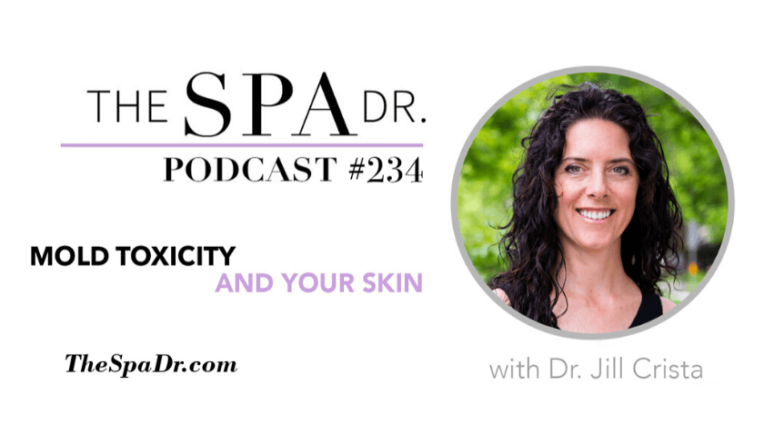
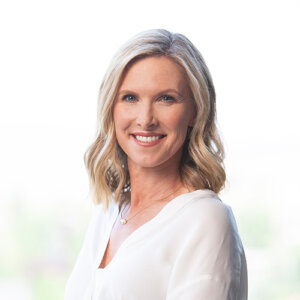
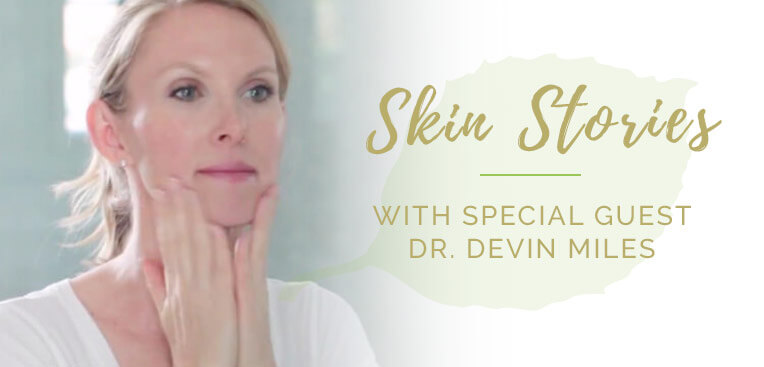
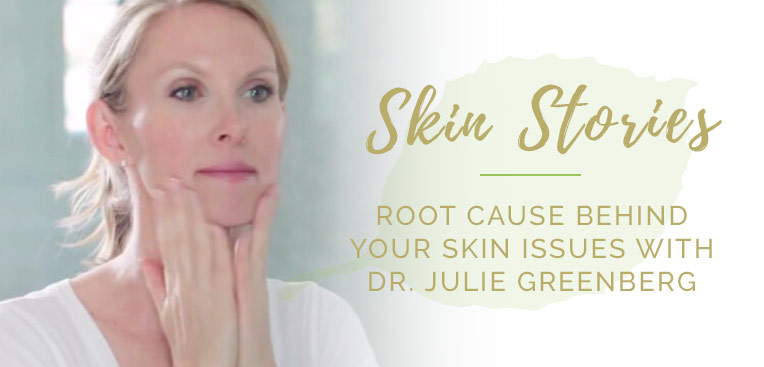

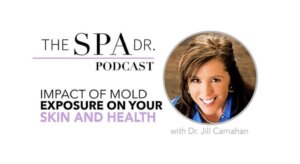
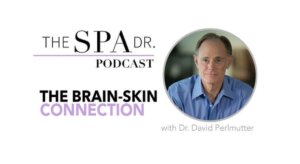


Reader Interactions